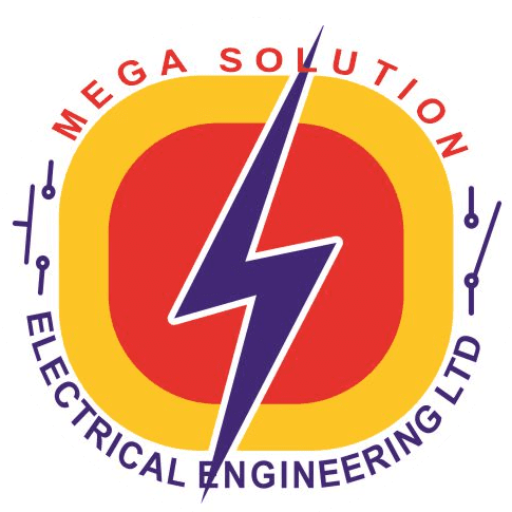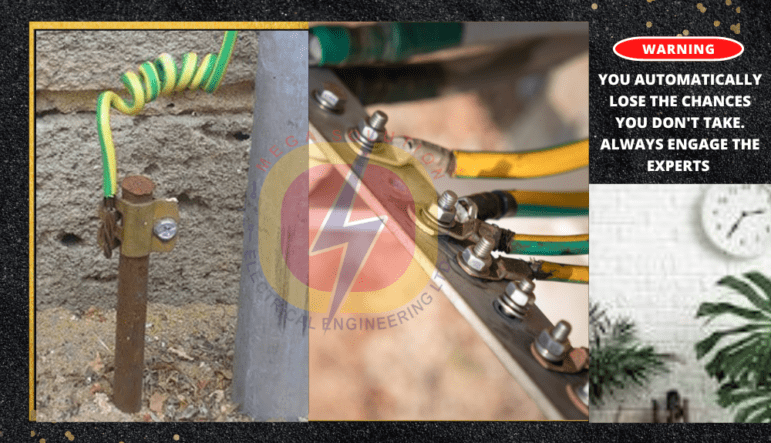Home / Blog Posts / Earthing System in Electrical Wiring
Unlock the Secrets of Earthing Systems in Electrical Wiring!
Discover how TN-S, TN-C, TN-C-S, TT and IT systems work. In a TN-S system, neutral (N) and protective earth (PE) conductors remain separate throughout.
• Learn about grounding at a single point
• Understand electrical installation essentials
Earthing, also known as grounding in electrical wiring systems, is the process of connecting an electrical circuit or system to the earth, typically through a physical connection to the ground. This connection provides a safe path for electrical currents to flow to the ground, reducing the risk of electrical shock, injury, or death.
Earthing is an essential aspect of electrical safety and is required by many electrical codes and standards, including the National Electric Code (NEC) and the International Electrotechnical Commission (IEC) standards.
In the context of electrical systems, especially in earthing systems like TN-S, TN-C, TN-C-S, TT, and IT
Examples,
Earthing, also called grounding, is a safety system that protects people and equipment from electric shock. Earthing in electrical wiring works by giving fault current a path to the ground, stopping dangerous voltage from building up on exposed metal parts.
During normal operation, electricity flows from the live wire into your device, then returns to the transformer through the neutral wire. The earth wire does nothing in this state and therefore the earth wire stays at zero volts and carries no current.
But if something goes wrong (like a live wire breaking and touching the metal body of an appliance) the fault current needs a way to escape. That is when the earth wire steps in. It gives the current a direct path to the ground or back to the transformer, depending on the setup.
Because this path has low resistance, a large amount of current flows quickly. That sudden surge is what trips a circuit breaker or activates the RCD. Power cuts off immediately, preventing electric shock and reducing the risk of fire.
The main purpose of earthing in electrical wiring is to keep you and your property safe. When a fault happens (like a live wire touching metal) earthing directs that current away from your body or the metal case. It also helps breakers or fuses trip quickly by allowing high fault current to flow into breaker and fuses. In normal use when there is no fault or current leakage, the earth wire stays at zero volts and carries no current. But when there is fault or leakage in the electrical wiring, the earthing system becomes the safety net.
A basic earthing system in electrical wiring has a few important components that work together to protect you. First is the earth electrode. This is usually a metal rod or plate buried in the ground. It connects the electrical wiring system to the soil which allows fault current to flow into the earth if something goes wrong.
Next is the earth wire. It connects the metal parts of appliances (like the outer casing of a washing machine) to the earth electrode. If a live wire touches the metal case, the earth wire carries the fault current safely away. All the earth wires in a building connect at one point called the main earthing terminal. This is the hub where everything comes together. Inside cables, there’s another earth wire called the circuit protective conductor. It runs alongside the live and neutral wires and adds extra safety by giving fault current a quick path to ground.
Finally, residual current devices (RCDs) keep watch. They constantly check for current leaks. If they detect any difference between the live and neutral current (meaning some current is escaping) they cut the power immediately. This helps prevent shocks and fires.
Together, these parts make sure that if a fault happens, the current flows through the earth system instead of through you or metal case of your appliances.
Proper earthing makes sure faults don’t turn appliances into shock hazards. It ensures that protective devices act fast and helps reduce electrical noise in sensitive gear. Without it, fault current might energize metal parts, leading to shocks or fires.
In a healthy electrical system, current flows from the power source through the live wire, powers the load, and returns through the neutral wire to complete the circuit. The grounding or earthing system stays inactive during normal operation, with no current flowing through the earth.
But if a fault occurs (like a live wire touching a grounded metal part) the current tries to return to the source through any available path. In TN and TT systems, the neutral is bonded to earth at the transformer or service panel, so fault current flows through the earth electrode and soil to the transformer’s neutral point, and also through the equipment grounding conductor, which offers a lower-resistance path.
Soil has higher resistance than metal, but still allows enough current to flow to trip breakers or ground fault devices. In TT systems, the earth is the only return path, so they use residual current devices (RCDs) for protection. The neutral-to-earth bond at the transformer or generator which gives the system a stable voltage reference creates a defined path for fault current to return and ensures protective devices trip quickly. Without this bond, voltages can drift and faults might not be detected.
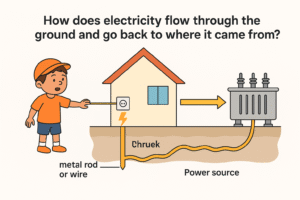
The answer is simple: the truth is, the earth does not carry current like a wire. It works as a backup path during faults, not as part of the normal circuit.
Let me explain in simple parts:
In a normal system, current flows from the transformer through the live wire, powers your devices, then returns through the neutral wire. No current flows through the earth during regular operation.
The earth rod comes into play only when something goes wrong, like a short circuit, a broken neutral, or a live wire touching a metal case. In those cases, the earth rod provides a low-resistance path for fault current. Even though soil has high resistance, it still allows enough current flow because of moisture, salts and minerals.
The earth or ground is truly poor conductor but when fault current enters the earth rod, it spreads out through the soil. Eventually, it reaches other buried metal parts, including the transformer’s own grounding system. This completes the path, letting the current return to the source through the transformer’s neutral. The resistance is high, but fault currents are large, so the voltage difference is enough to push current through.
In real life, if a live wire touches a metal appliance and you’re barefoot, your body could become the path to ground. That’s dangerous! But if there is an earth rod, the current flows into the rod instead, through the ground and back to the transformer which then trips the breaker and cut the power supply to the faulty circuit.
The takeaway: soil is not a great conductor, but it’s good enough for protection during faults. The earth rod doesn’t replace wires. It’s a safety net, not part of the main circuit. The true return path for current is still the neutral wire.
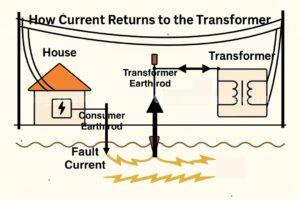
By understanding how current flows through the earth, we can design more effective earthing systems that provide reliable protection against electrical faults.
You can only treat the soil around the earth rod and the transformer, what happens to the soil that is many miles between the earth rod the supply transformer
You’re right; treating the soil around the earth rod and transformer won’t affect the vast amount of soil in between. However, the key point is that the earth doesn’t need to be a perfect conductor for the earthing system to work.
The earth or soil in earthing system in electrical wiring serves as a common reference point for the earthing system, allowing fault currents to flow and enabling protective devices to operate. While the earth isn’t a perfect conductor, it’s sufficient for the earthing system to function.
Earthing system design takes into account the soil resistivity and other factors to ensure effective operation. This includes:
By understanding how earthing works, we can design systems that provide reliable protection against electrical faults, even over long distances.
Electricians use specific tests to make sure the earthing system is working correctly.
The earth electrode resistance test measures how well the buried rod or plate connects to the surrounding soil. Lower resistance means better fault current flow. The earth fault loop impedance test checks if enough current can flow during a fault to trigger breakers or fuses. RCD tests verify that these devices shut off power fast when they detect a current leak.
Earthing doesn’t carry current under normal conditions. But when a fault happens, it’s what saves lives. It redirects dangerous current away from people and into the ground. Without proper earthing, even a small fault can lead to electric shock, fire, or equipment damage.
To verify the effectiveness and resistance of the earthing system in accordance with safety standards, ensuring proper fault current dissipation and personnel protection.
Earth Resistance Tester (3-point or 4-point method – e.g. Megger or similar)
Earth test leads and metal spikes (electrodes)
Measuring tape
Hammer (to drive the spikes)
Personal Protective Equipment (PPE)
Logbook or checklist
Ensure the system is de-energised (if applicable).
Use PPE: safety boots, gloves, and eye protection.
Keep the test area clear and dry.
Follow lockout-tagout (LOTO) procedures if working in high-risk zones.
(Standard and widely used for earth electrode testing)
Isolate the earth electrode under test from the system (if testing an individual rod) to avoid parallel paths.
Drive the current electrode (C2) about 30-50 metres away from the test electrode.
Drive the potential electrode (P2) about 15-25 metres away, midway between the test rod and the current spike.
Use a measuring tape for accurate placement.
Connect the test electrode (E) to the ‘Earth’ terminal of the tester.
Connect the potential electrode (P2) to the ‘Voltage (V)’ terminal.
Connect the current electrode (C2) to the ‘Current (I)’ terminal.
Turn on the earth tester and initiate the test. The tester will send a small current through the earth and measure the voltage drop to calculate resistance.
Note the resistance value in ohms (Ω).
Acceptable values depend on the application:
In General earthing: <5 ohms
For Sensitive equipment: <1 ohm
Lightning protection: <10 ohms
Move the potential electrode 5m forward and back from its midpoint and repeat the test.
If resistance values are consistent (within ±10%), the result is valid.
If they vary significantly, increase the spacing or improve soil contact and repeat.
If the measured earth resistance is too high (i.e., above acceptable limits like 5 ohms or 1 ohm depending on the application), you must take steps to improve the earthing system
Install additional earth rods (vertical or horizontal) and connect them together with copper conductors.
Drive rods at least 2 metres apart to reduce mutual resistance.
Interconnect them in a parallel configuration to effectively lower the total resistance.
Adding more rods lowers resistance due to multiple paths for current flow.
Extend the depth of the earth rod if possible.
The deeper you go, the lower the soil resistivity, especially in dry seasons or rocky areas.
Moist soil at deeper levels conducts better than dry surface layers.
Add earth enhancement compounds like:
Bentonite clay
Marconite
Ground enhancement gels
Charcoal + salt (traditional but temporary)
These materials reduce soil resistivity around the rod and maintain stable contact over time.
These are especially helpful in rocky, dry, or sandy soils.
Replace single rods with earth plates or earth meshes buried horizontally.
Increase contact area by using copper tapes or large diameter rods.
More surface contact means better dissipation of fault currents.
Pour water regularly around the earth pit (temporary solution).
Add salt and charcoal around the rod to maintain moisture (if allowed).
Avoid loose, dry soil – compact the earth after installation.
Moist soil drastically reduces earth resistance.
Ensure all earth rods, clamps, and connectors are tight, rust-free, and corrosion-resistant.
Use brass or copper connectors, and apply anti-oxidation paste if needed.
Loose or corroded connections can falsely raise test values.
If you have any questions prior to this topic, feel free to visit the Faq (Frequently asked questions) page and ask a question. You can visit the Blog Posts page to read other topics
No matter urgent any electrical repairs seem, it’s never okay to attempt to handle them on your own. Trying to take care of electrical problems without professional training is extremely dangerous. If you or someone else aren’t hurt during your attempt, there’s still a chance that you’ve left something undone that poses a huge risk to you, your home, or your family
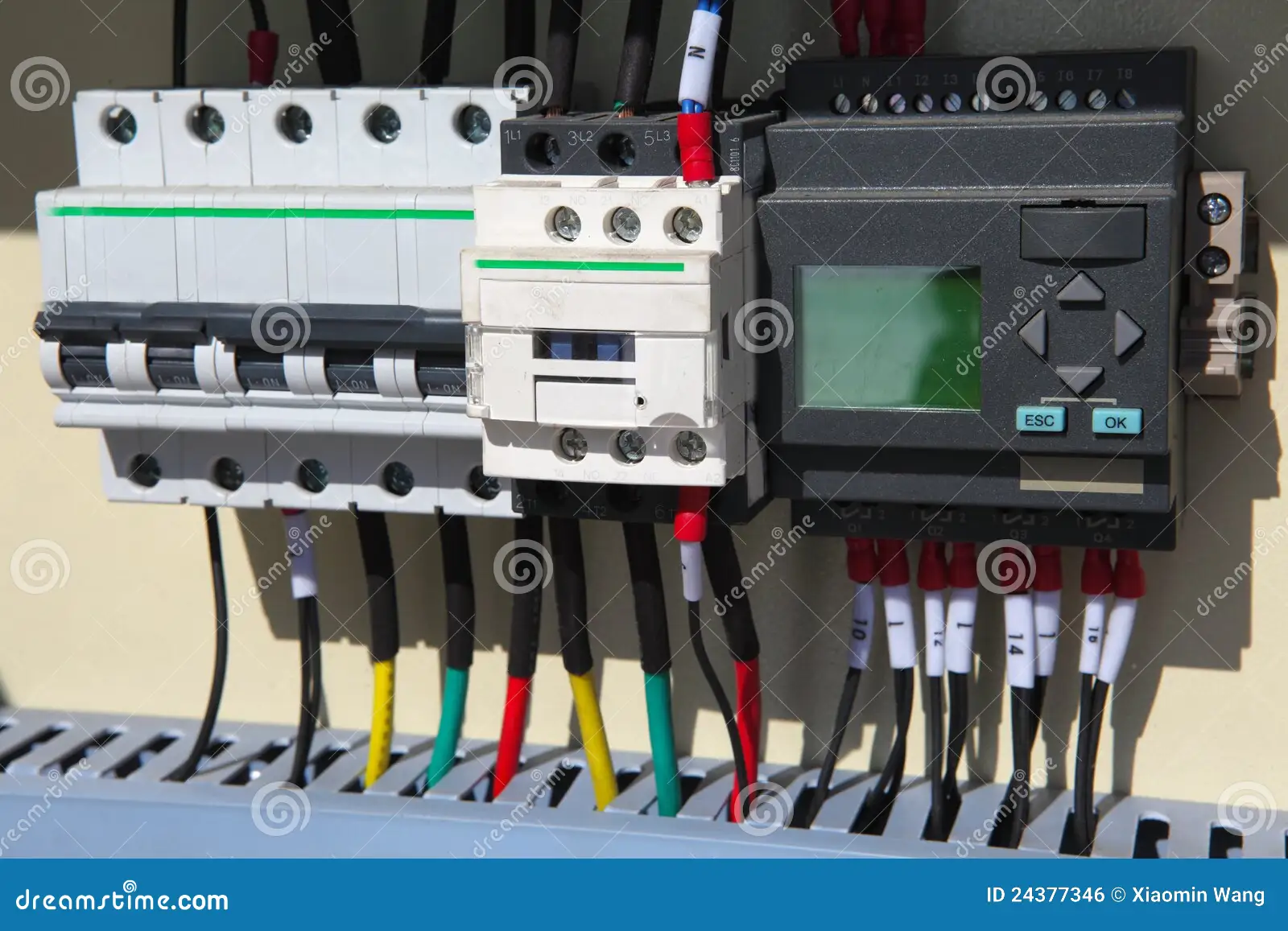
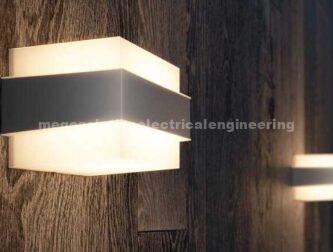
Our electrical wiring technicians know what a hassle any electrical problems can be, which is why we’ll always respond to any requests for service as quickly as possible. And because all of our technicians are licensed, background checked, and professionally trained, you’re guaranteed to receive the best quality service and workmanship available when you call us. We can assist with all your electric needs including:
When searching for a reliable electrician, call us at +233 24 415 1232 We specialize in electrical repairs, indoor and outdoor lighting installations, panel upgrades, and even hot tub wiring!
| M | T | W | T | F | S | S |
|---|---|---|---|---|---|---|
| 1 | 2 | 3 | 4 | 5 | ||
| 6 | 7 | 8 | 9 | 10 | 11 | 12 |
| 13 | 14 | 15 | 16 | 17 | 18 | 19 |
| 20 | 21 | 22 | 23 | 24 | 25 | 26 |
| 27 | 28 | 29 | 30 | 31 | ||
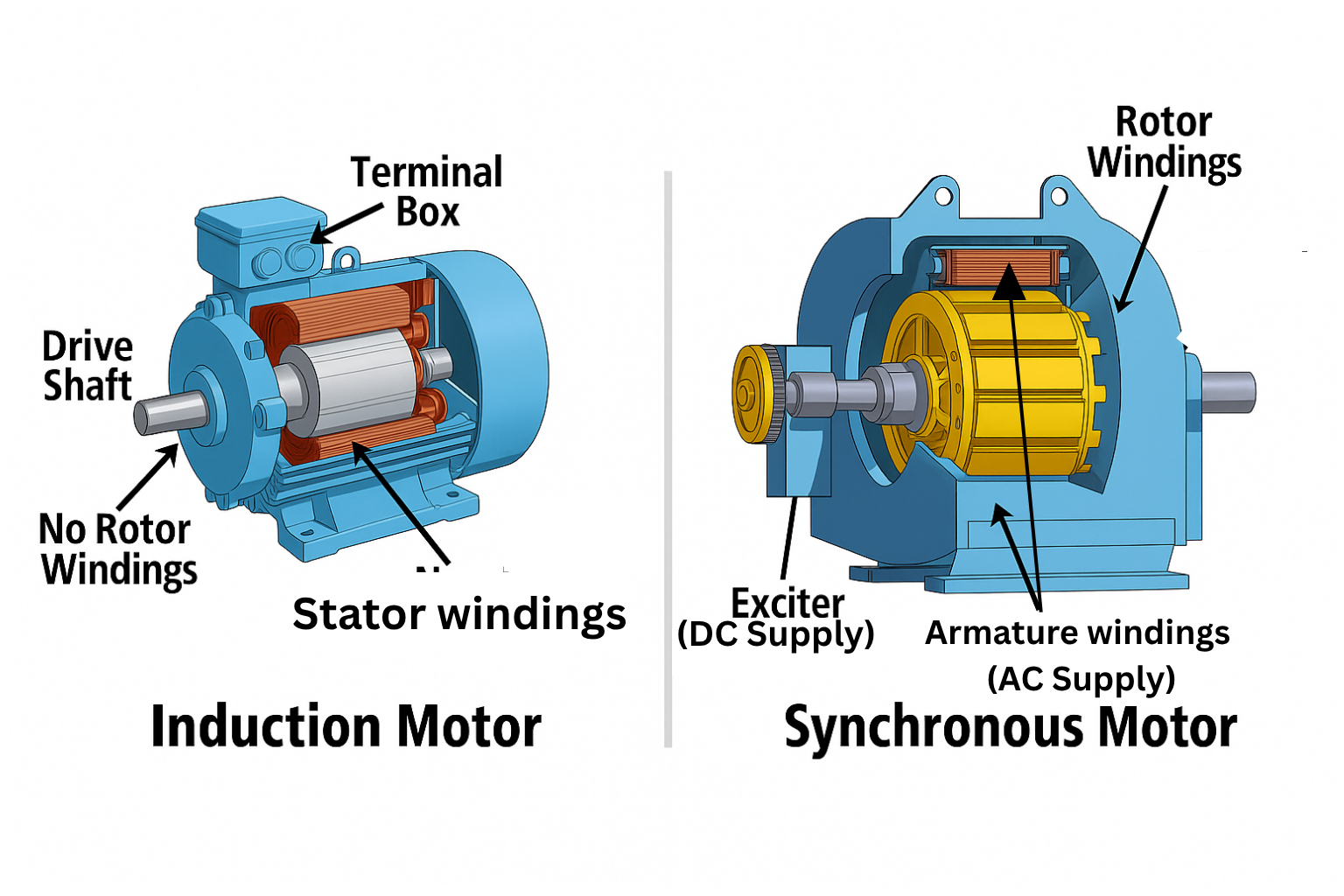
Discover the key differences between synchronous and induction motors.

What safety measures you need to put in place in your industry and why

As energy bills continue to soar, households and businesses alike are
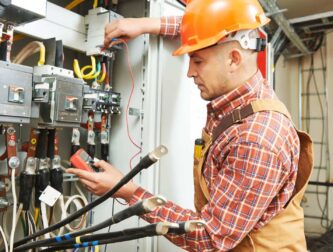
Dreaming of a Career as an Electrician in Ghana? Here's How to Make It
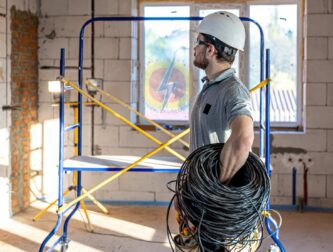
Characteristics of Top Electricians Before starting your search, it's
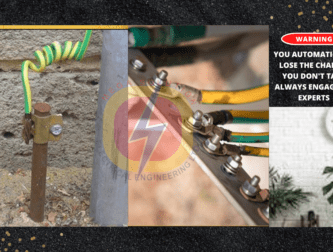
Unlock the Secrets of Earthing Systems in Electrical Wiring! Discover

